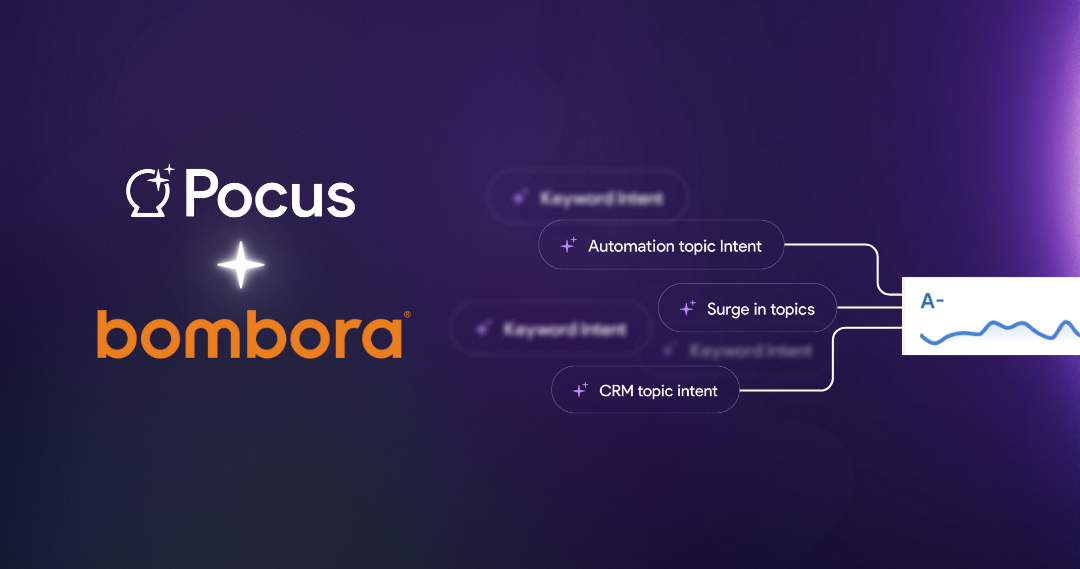Talk to any high-growth startup, and they’ll tell you that communication is the number one priority to keep the entire ship moving in the same direction. In our hybrid remote world, this is normally easier said than done. It’s one of the reasons Loom has been so successful. They took advantage of the rising work-from-home tide to launch a revolutionary way to do business - async video communication.
Based on their most recent funding round, Loom is valued at north of $1 billion and continuing to grow. Loom’s next growth phase is about scaling their GTM capabilities and capturing new business opportunities with larger customers. To do this, they’ve invested in scaling their entire revenue operation and enlisted Pocus’s help.
We got to catch up with Taylor Gibson, Director of Commercial Sales, and Will Waggenspack, Director of Business and RevOps, to learn how Loom turns product usage data into a pipeline-generating machine for sales.
Analyzing and prioritizing data about 18M+ users isn’t easy
Loom’s product-led success was, ironically, why the team struggled with its upmarket expansion motion. The sheer volume of users across multiple workspaces and accounts made it near impossible for the sales team to know where to focus, what playbooks to run, or what actions to take. Reps were prospecting like it was the wild wild west.
So, Taylor worked with Will and the ops team to find a solution. The team tried to make sense of this data themselves by joining product usage data from Snowflake with account data from Salesforce, but this was proving difficult. The team purchased another Product-Led Sales platform but were still unsuccessful in getting the data in the right shape or having reps adopt the product.
Key Challenges for Loom’s GTM team
No access to actionable data for reps
Reps were digging through multiple tools like Tableau, Salesforce, and Outreach daily to find top opportunities and research accounts. This meant opportunities were slipping through the cracks. Overwhelmed by the volume, reps could not parse signal from noise, resulting in high potential opportunities getting overlooked.
Pocus has been a game changer for me. Used to spend up to an hour researching a single account and would repeat that process throughout the day. With Pocus, I can get a quick snapshot of all my accounts and take action within 5 minutes without digging for data everywhere. This means more time for strategic work and more meetings booked.
— Craig Bittner, Sr. Business Development Representative
Loss of productivity for RevOps
The ops team was stretched thin trying to make data accurate and available across these tools. They were wasting time stitching together data that would still not meet the go-to-market team's needs.
This was a really complicated workflow on the ops end of the world. Connecting our product data warehouse, which lives in Snowflake, to our Salesforce instance, and surfacing all that information for reps in one place and automatically alerting them was time-consuming and didn’t always meet 100% of the teams’ needs.
— Will Waggenspack, Director of Business and Revenue Operations
Lack of consistency and experimentation for Leadership
Leadership was finding it difficult to know what product signals to prioritize, what playbooks were working, and how best to enable reps on the Product-Led Sales motion.
It was like the wild, wild west. There was no standardization. We needed a way to pull together data, ensure that data was accurate, reduce context switching for reps, and make sure reps were using the same data set for every single customer for consistency.
— Taylor Gibson, Director of Commercial Sales
How Pocus became the operating system for Loom’s entire funnel
Frustrated with internal builds and the other Product-Led Sales platform, Taylor and team brought Pocus in to finally accelerate their Product-Led Sales motion, helping identify which product signals sales should prioritize. As Taylor explained, “We needed a way to create visibility for reps so they understood what product signals they should action and how to turn that into a repeatable motion for creating pipeline.” Since implementing Pocus, Loom has driven more consistency with PLS playbooks, which has led to reps generating more meetings and, in turn more pipeline.
.avif)
Not only has Pocus become the source of truth for product signal-based playbooks, but it has become central to Loom’s go-to-market operation. Pocus is the data layer that powers all playbooks from inbound to PLS to customer success.
When we originally brought in Pocus, we thought that this was just going to be a product signals tool for BDRs to run outbound plays. Then, when we actually got into the weeds and understood what Pocus could do for us, we realized it was more of an operating system for our entire funnel. This is something we can use for Sales, CS and beyond.
— Taylor Gibson, Director of Commercial Sales
Go-to-market operating system
The key to Loom’s success in scaling their GTM operation has been the unlock of having a single data layer to support the entire GTM team. Before Pocus, Will explained that each new GTM playbook could require buying a new tool, orchestrating new workflows, setting up a new process, or enabling the team - all of which fell on the ops team's to-do list.
With playbooks running across disparate systems, the go-to-market team saw inconsistencies in how data synced and discrepancies in how some metrics were calculated.
%20(1).avif)
With Pocus, Will and the team use Pocus’ Revenue Data Graph to create a single data layer to support multiple go-to-market playbooks. The flexibility of the data layer makes it easier for ops and leadership to spin up new playbooks with ease for both the sales and customer success teams.
"There’s a future-proofing aspect to Pocus. I don't feel we need another tool evaluation for a while. It's just like, oh, this is going to work for so many different use cases."
— Will Waggenspack, Director of Business and Revenue Operations
Pocus’ Revenue Data Graph is designed to help teams drive alignment between data and GTM. According to Will, it’s one of the many reasons the ops and data teams love working in Pocus. “It's like night and day versus working in other tools. And our data engineering team has loved it because of that," he said.
👉 Learn more about the Revenue Data Graph.
Pipeline generation machine
Before using Pocus, the Loom team found it difficult to orchestrate expansion and upsell motions with the data and workflows in their existing tools. Reps were frequently context-switching across various tools and could not identify key signals that were predictive of conversion, particularly for enterprise upsells.
With Pocus Playbooks, Loom has been able to scale their land, expand, and upsell motion. The Loom team can now run multiple playbooks in parallel to uncover which product signals correlate to conversion. Through Pocus, the Loom team discovered that one of their most effective playbooks for enterprise upsell was engaging an account administrator who recently took a compelling product action.
The Loom team also uses Pocus to improve their speed to lead by bringing in hand raisers. With the Pocus Inbox, reps can quickly action inbound hand-raisers in the same tool as their PLS and outbound playbooks.
👉 Learn more about Pocus Playbooks.
Repeatable and consistent playbooks
Taming the wild west of prospecting was top of mind for Taylor when onboarding Pocus. Before Pocus, the leadership team relied on imperfect information about how reps were actioning data within specific playbooks. Taylor explained a typical workflow: "spending time looking at their books of business in Salesforce and asking ‘why'd you reach out to this account’, ‘what was the play that you ran’, and ‘what was the outcome?’ to get any visibility.” It was unscalable and difficult to standardize across dozens of reps.
With Pocus, Reps can take the guesswork out of the process by using their Pocus Inbox to manage the Playbooks they are running. All of their top priorities are organized in one place.
For leadership, Coaching in Pocus gives them visibility into every rep's playbooks, how they are tracking towards goals, and how they are individually performing.
“What Pocus allows us to do is drill down on each individual rep to see all of the signals that they might have available for them and then really understand who's embracing Pocus, who's doing the outbound work against the signals that they might have in their book." - Taylor Gibsons
👉 Learn how Coaching can help your team standardize playbooks.
Results of scaling Loom’s GTM operations

- Influence pipeline: By surfacing product signals in Pocus Playbooks, reps have more bandwidth to book qualified meetings resulting in 33% of total pipeline generated.
- Tool consolidation savings: Loom consolidated sales and customer success playbooks in Pocus, eliminating the need for a bespoke CS tool and BI dashboards for sales.
- Self-serve playbook configuration: RevOps can rapidly experiment with new playbooks in one tool, saving wasted time spent stitching data across multiple tools and creating unnecessary process overhead.
{{form3a}}


.png)


.png)
.jpg)






